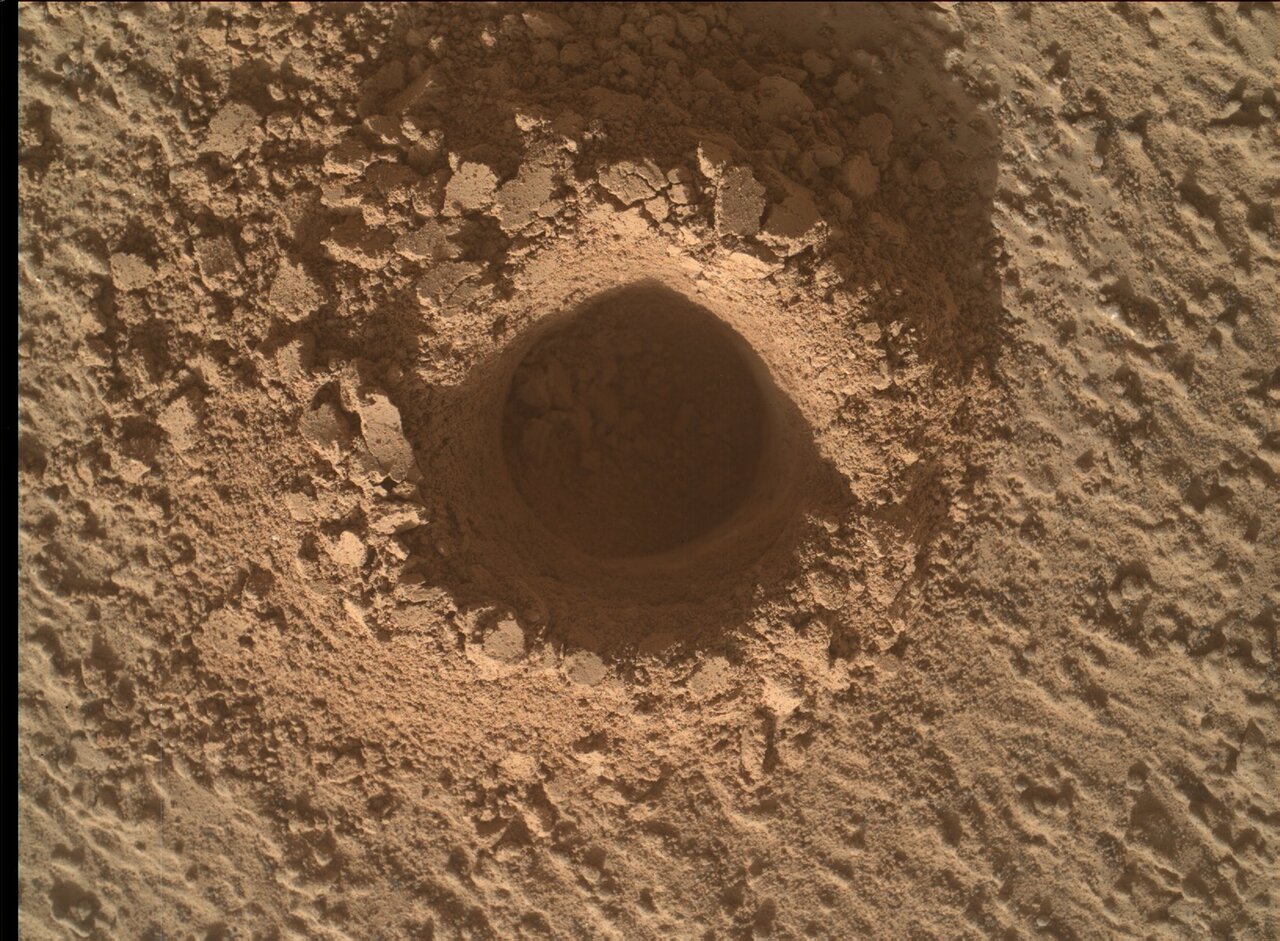2 min read

This two-sol plan will wrap up our drilling activities at the Maria Gordon drill location before continuing the drive up-section and towards the southwest. On the first sol of the plan, Curiosity will primarily be performing arm activities to further characterize the recently dumped drill sample and the drill hole. Daytime and evening imaging will occur using the MAHLI camera on the end of the arm. Overnight, the APXS instrument will be used to characterize the chemistry of the drill tailings. On the following sol, the team has planned a series of Mastcam mosaics and a long-distance ChemCam image mosaic, in addition to a Mastcam multispectral image on the drill dump pile.
Following this suite of science activities, Curiosity will drive away from this drill location and towards a region that contains a high abundance of nodules in the bedrock. Curiosity will use a driving technique designed to better prepare the nodular surface for additional investigations. Once Curiosity reaches her intended target at the end of the drive, she will perform a series of small maneuvers designed to crush any nodular targets on the surface before turning back around and putting herself in position to analyze the surface. If successful, we hope that this technique will result in better preparing the surface for additional imaging and compositional analyses, beyond what is commonly performed by Curiosity during normal imaging and surface analysis campaigns.
Written by Mark Salvatore, Planetary Geologist at University of Michigan







